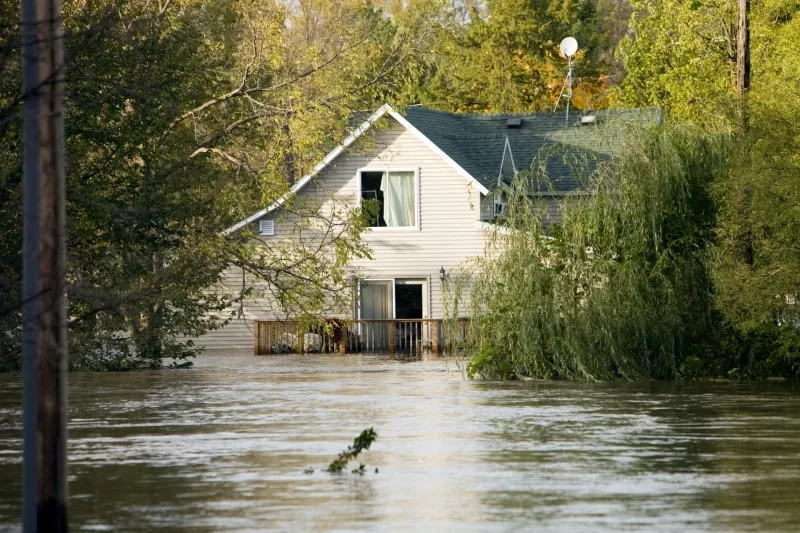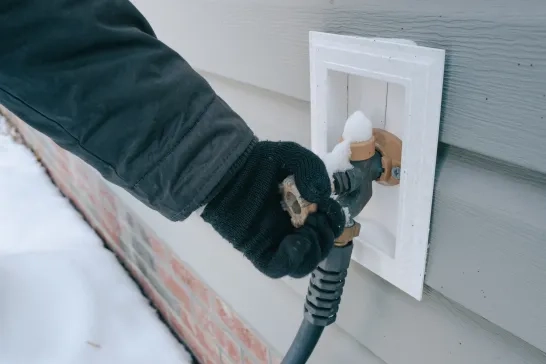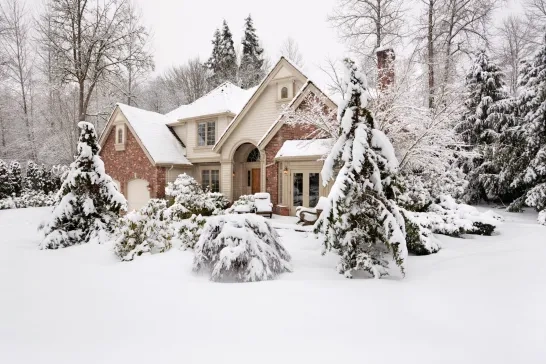
What to do in a natural disaster
4 Minute Read
Though Canada may not have volcanic eruptions or monsoon rains, federal data shows that our country still averages about a dozen natural disasters a year, including tornadoes and floods. Here's how to ensure you're ready when bad weather hits.
Experts say the number of natural disasters will increase as climate change prompts more extreme weather—and it’s important for Canadians to be prepared. “Disasters are more common, and when they do happen, they’re bigger,” says Joshua Bezanson, a physician and the host of the podcast Emergency Preparedness in Canada (EPIC). “Just playing the odds, it’s increasingly likely that you will be directly affected.”
There are four types of extreme weather you may encounter in Canada.
Floods
As flooding is the most common natural disaster in the country, Jim Montgomery of the non-profit group Community Disaster Response Ontario recommends putting well guards around your basement windows. He also suggests installing both a sump pump, which prevents water from pooling in your basement, and a backflow valve, which blocks sewage from entering your house. If flooding is imminent, move your furniture, valuables and family keepsakes above ground level. Do not attempt to turn off your home's electricity if the water is rising, as that could lead to a fatal shock.
Tornadoes
The prairies and southwestern Ontario are especially fertile ground for twisters. If you live in a high-risk area, tune in to your local radio station during severe thunderstorms and pay attention to emergency alerts on your mobile device. If one hits and you're at home, take refuge in the basement, or if you don't have one, a small ground-floor room, like a bathroom. If you're in an apartment or office building, seek shelter in an inner hallway or room on a low floor. If you're driving, look for the nearest sturdy shelter. If there isn't one, leave your car and hide in a low-lying area, like a ditch.
Wildfires
Devastating blazes are expected to become more common as Canada’s climate changes. If you live in a rural area, remove fallen branches, dried leaves and other potential fire hazards from around your home to avoid sparking a fire.
If a wildfire is approaching, close all doors and windows and cover your air vents. Turn on any sprinklers installed on your roof, shut off the natural gas if you have it, and move propane barbecues away from your house.
Park your car facing away from your home in case it rolls, and turn your wheels to the right. Follow any evacuation orders, too. For an up-to-date map of wildfires, visit the Canadian Interagency Forest Fire Centre website.
Ice storms
Freezing rain is detrimental to the power grid. Too much, and it can topple trees and power lines, leading to blackouts that can last days or even weeks. If a severe storm is in the forecast, the Red Cross recommends readying your emergency kit, chimney, generator or battery pack, if you have one. Venture outside only if you have to. If you do, be on the lookout for downed power lines and wobbly tree branches.
Be proactive
Research hazards in your immediate area and conduct a risk assessment. The government has emergency preparedness websites that outline which neighbourhoods are prone to flooding, forest fires and other extreme weather conditions (getprepared.gc.ca). Develop an emergency plan tailored to your home and family. Refresh the plan twice a year, once in early winter and again in early summer, so you know what to do in every season.
Staying in touch
One of the most important things is to have a plan to communicate and reunite with your family, says Kim Fournier, author of The Seven Steps to Emergency Preparedness for Families. She recommends establishing a primary point of contact, like a parent, and one in a different city, in case you have to evacuate to another area.
In an emergency, cellular networks can be overwhelmed by phone calls. Communicate by text if possible, which uses much less bandwidth, or an app like Two Way: Walkie Talkie, which allows you to use your phone as a two-way radio.
But experts say not to go overboard. “We all need to live our lives,” says Montgomery. “Disaster preparedness isn’t something you need to think about every day.” But it is important to think proactively.
Prep for outages
Natural disasters can leave you without light, heat, or hot water. But with these tips, you won't feel left in the dark.
- Buy a gas-powered generator or a residential-sized backup battery.
- Use a wood-burning fireplace to stay warm, but ensure the chimney is cleaned every year.
- When the power is out, unplug all your electronics to prevent damage from a power surge.
- If you use candles, make sure they're in a proper holder and extinguish them before going to sleep.
- Don't open your fridge or freezer unless absolutely necessary. If left closed, food will keep for up to 48 hours in the freezer and for 12 to 24 hours in the fridge.
- Never use a barbecue or camping stove inside the house, as they emit carbon monoxide, which can be fatal.
Gear up

doble-d | iStock
You'll want to have the proper supplies on hand when disaster strikes. Here's what to include in your emergency kit.
- Food and water for at least five days
- Any prescription medications
- Battery pack for your mobile devices
- Flashlight
- Crank or battery-operated radio
- First-aid kit (including bandages, gauze, alcohol wipes, gloves, small scissors, tweezers and cotton swabs)
- Candles and holder
- Matches
- Hand sanitizer
- Important documents, including your health card and driver's licence
- A waterproof bag
- Clothes and shoes
- Toiletries
- Cards and board games
- Pet supplies, including food, water and medication
For more on what to pack, visit ontario.ca/page/be-prepared-emergency.
Save on supplies
Enjoy savings from CAA Rewards partners on emergency essentials, such as flashlights, battery packs, radios, first aid kits, toiletries, and groceries.
Protect your home
Ensure your home insurance policy covers damage caused by natural disasters. CAA Insurance1 provides complimentary policy reviews, regardless of your insurer. Call 1-888-545-7254 and speak to a Licensed CAA Insurance Agent for a complimentary policy review, or visit GetCAAInsurance.ca for more information.
1 Property Insurance is underwritten by CAA Insurance Company. Certain conditions, limitations and underwriting guidelines apply.
®CAA trademarks are owned by, and use is authorized by, the Canadian Automobile Association.




